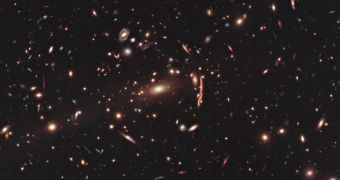According to two new scientific papers, one still under development, and one published on February 11 on the preprint science server arXiv, the explanation for why galaxy clusters today have a lot less mass than predictions call for may be simpler than thought.
Astrophysicists have been trying to figure this out for years. They know that the Universe contained quantum fluctuations, or tiny ripples, in its density shortly after the Big Bang occurred. These ripples eventually grew and developed until they turned into massive galaxy clusters and superclusters.
These formations feature thousands upon thousands of galaxies, all bound together by the force of gravity. However, when scientists measured the weight of individual clusters, they noticed that around 40 percent of the predicted mass was missing, meaning the structures were much lighter.
Experts first discovered the mismatch after analyzing data sent back to Earth by the European Space Agency’s (ESA) Planck telescope, a mission designed to detect traces of the early quantum fluctuations, as they are imprinted on the cosmic microwave background (CMB).
This discrepancy between theory and observations is very difficult to explain. Some experts have proposed new types of physics that go beyond the constraints of the Standard Model of Particle Physics, but the new studies indicate that such complex explanations may not be required.
The investigation was led by scientist Anja von der Linden, who holds an appointment as an astrophysicist with the Kavli Institute for Particle Astrophysics and Cosmology at Stanford University, Nature News reports.
She and her team used the Subaru Telescope and the Canada–France–Hawaii telescope, on Mauna Kea in Hawaii, to investigate 22 of the galactic clusters Planck also observed. The group determined that the average mass of a galaxy cluster was around 1,000 times that of the Milky Way, or 10^15 solar masses.
This average value was around 43 percent higher than the weight estimate provided by Planck. “We think there’s no problem,” von der Linden says. She is involved with both the Weighing the Giants project, which produced the first paper, and the Cluster Lensing and Supernova Survey with Hubble (CLASH) survey. The latter uses Hubble to conduct a similar investigation.
In addition to potentially clearing up old mysteries, such studies have the potential to reveal exactly how dark energy influenced the development of galaxy cluster from cosmic fluctuations in the early Cosmos.

 14 DAY TRIAL //
14 DAY TRIAL //